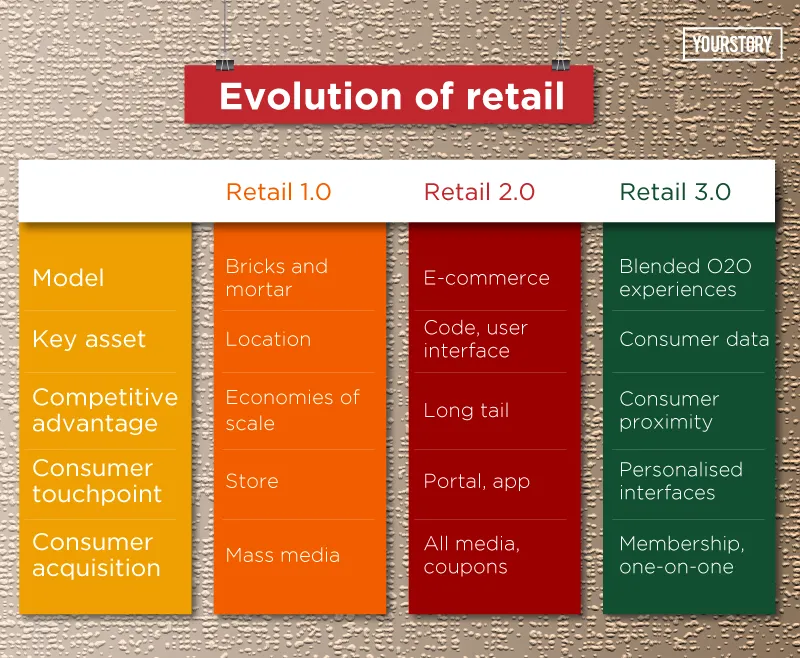Beyond ‘startup tourism’ and ‘startup zoo’ – how corporates can partner with startups for innovation
Startups are out-pacing corporates in several areas of innovation, leading many of them to form partnerships for co-innovation via accelerators and hackathons. Startup creativity and agility seem to be a good complementary match for corporate scale and standardisation.

HackerEarth’s recent Enterprise Innovation Summit in Bengaluru brought together innovation practitioners and consultants from Accenture, Dell EMC, DXC, Future Group, IBM, SBI, Societe Generale, and Zinnov; there was a design thinking workshop conducted by Pensaar as well. It would have been good to also feature some startups to share their experience on working with corporates.
Here are my 11 takeaways for successful innovation partnerships, based on speaker insights. See also my framework of 15 innovation tips: how large corporations can successfully engage with startups, and YourStory’s Startup Hatch profiles of accelerators, incubators, and makerspaces.
- Map the trends and disruptions in your industry
A good starting point for innovation journeys would be to map the broad trends and competitive transformations in the industry. Knowledge management techniques like internal and external knowledge mapping are useful here.
For example, Vivek Biyani, Director of the Future Group, presented their framework of retail evolution (see my summary in Table 1 below). The company wants to transform itself into Asia’s largest integrated consumer business by 2047.

Such knowledge mapping helps identify internal strengths, competitive positioning, and opportunities for filling knowledge gaps via partnerships with startups and academia.
For example, sectors like music, video rentals and photography were disrupted by the internet by 2000; TV, news, travel and recruitment faced significant disruption by 2005, said Sachin Gupta, CEO of HackerEarth.
By 2010, disruption had spread to retail, finance, education and healthcare. “Now, there are no safe havens,” cautioned Sachin, as all businesses will be disrupted in the coming years.
2. Strengthen your body of knowledge on innovation
The methods of innovation themselves are being innovated, and a wide range of books, conferences, and workshops address emerging frameworks of innovation such as frugal innovation, disruptive innovation, crowdsourced innovation, reverse innovation, co-innovation and open innovation (see YourStory’s reviews of over 150 books on these topics).
Innovation is no longer confined to corporate and government R&D labs – it is democratised and out in the open, said Sachin Gupta. “Black swan” events are happening more frequently, knowledge worker mobility is increasing, digital technologies are disrupting business processes, and startups are creating new business models.
However, many large companies do not have the skillset to address every emerging technology, said Sachin. They are also wary that new products will threaten existing business offerings, and do not have the risk appetite to deal with considerable investments for uncertain RoI.
Co-innovation with startups is a fruitful option for growth, but needs changes in corporate leadership strategy, culture and processes. People-centric approaches are needed, coupled with data-centric assessment.
3. The India opportunity
India has 1,100 MNC R&D centres, over 5,000 tech startups, and a pool of 300,000 STEM graduates each year, said Preeti Anand, Director, Zinnov. MNCs have clearly recognised India’s innovation potential through accelerators and Global In-House Centres (see my GIC article on ‘Invention and Re-invention’).
Preeti identified a number of notable innovations coming out of India, such as Ulta Chaata (solar power generation and rainwater harvesting), EnviGreen bio-degradable bags, Tata Nano and ISRO satellite launches. MNC innovations coming out of India include Philips’ low-cost ECG scanner, Renault India’s KWID sub-compact car, and Conduent Labs’ scanners for healthcare.
However, India accounts for less than one percent of global patent filings each year, Preeti observed. India needs to focus on breakthrough innovation as well as sustained continuous innovation, she advised. India’s base of 1 billion digital users and 50 million SMBs makes it ripe for launching and scaling innovative ventures. India will also have the world’s largest developer community by 2021, said Gururaj Adrakatti, Head, Global System Integrator Labs, IBM.
A number of promising initiatives have been launched by government which can be tapped by startups and corporates alike, such as India Stack, Smart City initiatives (for 100 cities), and universal healthcare coverage for 500 million citizens.
Indian companies and MNC players can launch their initiatives by defining goal posts, starting agile and structured projects, and embracing open innovation with startups, advised Preeti.
4. Partnership scope
Many corporates begin their startup partnership with “startup tourism” and a “startup zoo,” joked Avnish Sabharwal, MD, Accenture. But just visiting a range of startups, hosting a meetup, or inviting some startups to work out of the corporate office is not sufficient.
To go beyond the awareness stage, corporates need to develop maturity frameworks for further stages like ideation, exploration, partnership, collaboration, co-creation, impact, and optimisation. This should in turn be mapped onto the startup phases of growth.
As tools such as the Startup Ecosystem Canvas reveal, there are different options available for corporates to partner with startups at various stages in their innovation journey: idea stage (hackathons, business plan competitions), launch stage (co-working spaces, incubators, mentorship networks, corporate funding) and growth stage (accelerators, go-to-market).
5. Innovation sources and architecture
Innovation initiatives tend to involve a mix of up to 25 components: hackathons, bootcamps, idea portals, patent programs, product demos, innovation centre of excellence (CoE), intrapreneurship teams, innovation coaching, customer councils, crowdsourcing, open contests, innovation jams, venture investment arm, innovation outpost, prototyping labs, incubation labs, startup accelerators, partnership with external accelerators, and collaboration between business units, universities, industry associations, government labs, and startups.
Profiles of innovation team members include strategists, product experts, process specialists, technologists, IP experts, and innovation advocates. Innovation should be broad-based so that inputs can come from any employee and even via open innovation: from customers, consultants, competitors, trade associations, academia, business partners, and startups.
Innovation teams should be self-empowered to try and test ideas. Innovation project managers in exploratory or portfolio modes can report to the CTO, R&D head or strategy team, advised Preeti.
The engagement with startups can begin by the corporate identifying problems and business challenges across its geographies, explained Rathnaprabha M, Director, Head of Innovation, Societe Generale. The France-headquartered bank has engaged with 50 startups in its accelerator programme, for 12 weeks each.
“We give startups a problem to crack, and introduce them to new clients,” said Rathnaprabha. Usually, startups in the accelerator own the IP generated, but the corporate has the right of first use.
6. Industry alliances
Some companies are forming industry alliances for innovation, and inviting startups to engage with the entire alliance. For example, SBI is part of the BankChain Alliance to embrace blockchain and distributed ledger technologies, said Sudin Baraokar, IT Advisor and Innovator, SBI. All members of the alliance can benefit by the innovation of a single startup, he added.
SBI has teamed up with HackerEarth to launch hackathons called Code4Bank and Digitise4Bank. “We want to become the most innovative bank in the world,” said Sudin. “SBI is no longer just a grandfather’s bank,” joked Avnish Sabharwal of Accenture.
7. Metrics
Primary and secondary outcomes should be planned for the near-term, medium-term and long-term windows of opportunity. These can be charted in matrix form for the four parameters of ideation, asset creation, exploration and asset creation, and the types of innovation components, Preeti explained.
The aim of the innovation initiative should be clearly specified, so that outcomes can be calibrated without raising expectations too high or too low. Outcomes can be idea number, quality, categories, and frequency in the ideation stage, all the way to successful implementation in the startup collaboration stage.
For example, metrics to assess the accelerator performance include launch time in the open market, monthly deal flow, number of patents filed, value of patents, equity raised, and business insights.
8. Tools to manage startup partnerships
Partnerships need to be managed between startups, corporates and their vendors. Creating a digital platform helps plan, map and track innovation workflow activities ranging from problem definition and ideation to partnership governance and employee utilisation.
HackerEarth has developed a tool called Sprint 2.0 to map an enterprise’s innovation management initiative. This has been used in its hackathons for companies like Future Group and Exotel. HackerEarth has conducted hackathons in India, the US, and Europe; it has over a hundred corporate customers including InMobi, Adobe, Amazon, Wells Fargo, MakeMyTrip and Honeywell.
9. Hackathon incentives for startups
HackerEarth’s Startup Connect initiative enables startups to find prospective corporate partners to showcase and test their offerings. Startups compete not just for the experience of experimenting with data sets and tools, but for awards, prizes, corporate contracts, investment opportunities, and go-to-market connects with the broader ecosystem.
For example, Exotel offered hackathon participants a training data set (sample audio files) to build voice recognition software. The 18-day hackathon offered a first prize of Rs 3 lakh and second prize of Rs 1 lakh.
Future Group’s Consumer & Digital Lab explored new insights for its vast customer data via a Future Datathon session conducted with HackerEarth. The first prize was Rs 2.5 lakh (with a paid project of fees worth Rs 7.5 lakh); second place winners got a prize of Rs 1.5 lakh (and a project worth Rs 5 lakh). The third prize was Rs 1 lakh, along with a Rs 2.5 lakh project.
10. Innovation governance
The Future Group’s design philosophy for innovation is “digital first,” said Vivek Biyani, Director of the Future Group. It has 789 stores across India, 75 brands, and 10.4 billion units of merchandise sold.
Its Retail 3.0 transformation is driven by “0 to 1 Labs” (for innovations with frontier technologies) and “1 to 100 Tech” groups (for incremental innovation). The name “0 to 1 Labs” was inspired by Peter Thiel’s description of disruptive innovation (see my book review here).
“We want to provide the ‘Future Group Edge’ to help path-breaking startups validate, evolve, refine, and scale their ideas,” said Vivek. “Partnering with startups delivers innovation not just to the Future Group’s businesses but to our customers also,” he said. Partnering with startups is key to accelerate realisation of Retail 3.0
The company’s Future Consumer & Digital Lab (C&DLabs) was launched in 2017 with HackerEarth as a partner for hackathons. Thirteen startups were on-boarded, and nine pilots are in progress across six Future Group businesses. A governing council and three-member dedicated team help bridge startups and the internal businesses, and provide services like mentorship.
11. Cultural transformation
Long-term success for corporates to work with startups depends on their internal cultural transformation. “You have to disrupt yourself,” Avnish of Accenture advised corporates.
Large firms have to anticipate the future and form partnerships of different scale and scope. For example, SBI is in discussion with Intel for customised chips that can handle the heavy processing loads of distributed ledgers.
“Speed is of the essence,” said Rathnaprabha of Societe Generale. Companies also have to protect consumer data and privacy; hence, many startup engagements are for embedded technologies and processes, and not direct consumer-facing interactions.
Large companies need to balance agility with standardisation, advised Sreekanth K, SVP, DXC India. Corporates themselves undergo cultural changes after mergers and acquisitions (DXC was created by the merger of CSC and the Enterprise Services business of Hewlett Packard Enterprise).
“The last mile of the innovation journey is the employee,” said Sreekanth. Innovation capacity has to be boosted in the workforce, and it helps to hire young innovators who are tech-enabled and have a lot of intellectual, spiritual and creative energy. The next-generation workplace will also have many more freelancers, who will engage with corporate employers via a “dynamic talent cloud.”
Companies like Google have mastered the art of blending technology with creativity, said Sreekanth. Traditional firms have to adopt non-linear approaches and learn to co-innovate and co-build with partners. Corporate leaders must open themselves to innovative ideas from the full “ABCD” spectrum, he said – accounts, business, customers, and domain.
The Future group has told its managers that if they do not change to the new reality, they will not find a place in the organisation, said Vivek Biyani. Its new initiatives include neighbourhood stores, digital transformation, and reimagined wholesale distribution.
Customers themselves are forcing companies to innovate, observed Sarv Saravanan, VP and GM, Dell EMC. Agile has to be not just a process but culture itself.
In sum, startups can help corporates increase their innovation quotient while also finding new avenues of customer development and go-to-market scale. More experimentation, collaboration and research of these outcomes will help strengthen such partnerships into win-win-win propositions for corporate, startup, and consumer.









![[Weekly funding roundup April 20-26] VC investment dips as startups resort to debt capital](https://images.yourstory.com/cs/2/220356402d6d11e9aa979329348d4c3e/funding-lead-image-1669386008401.jpg)

